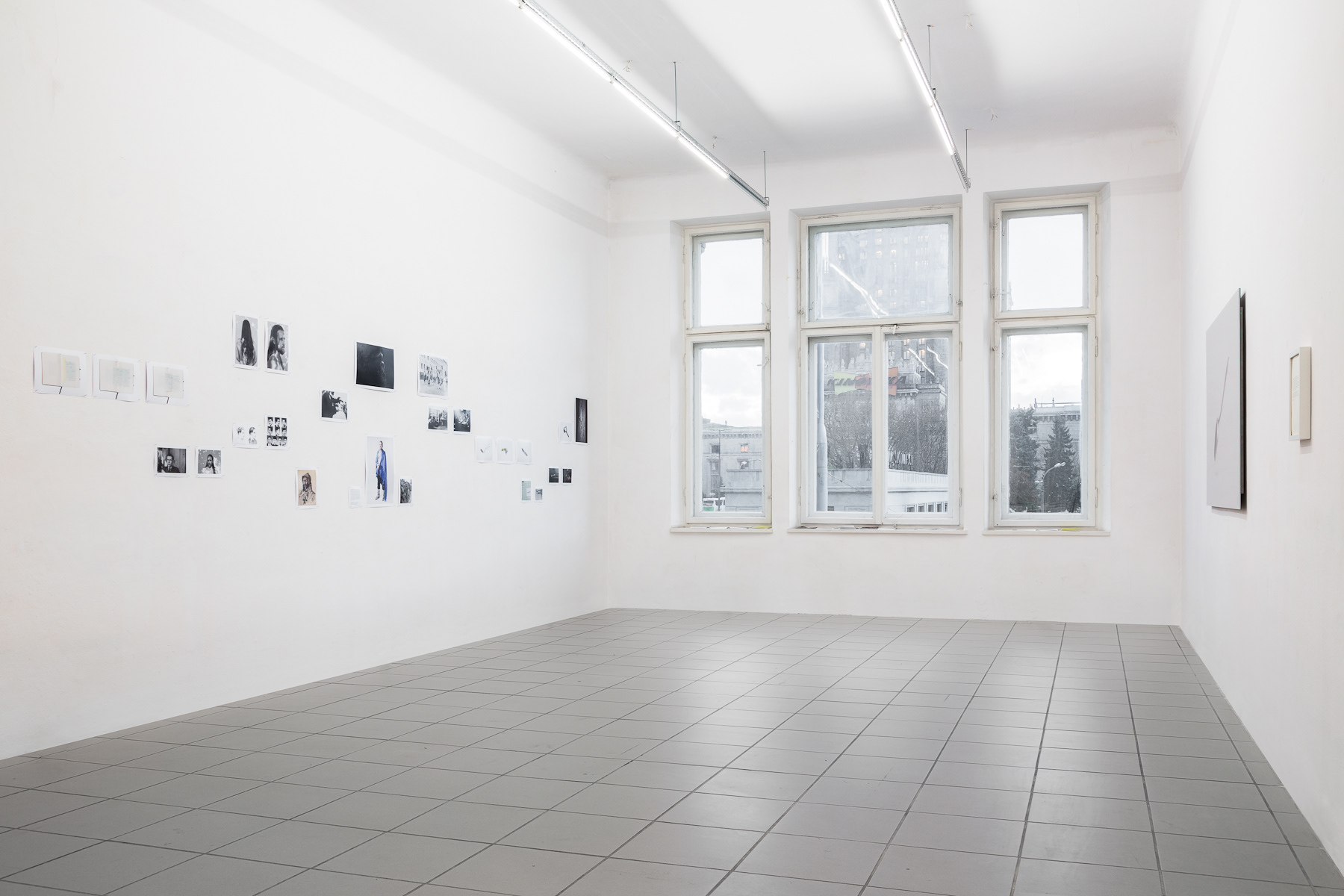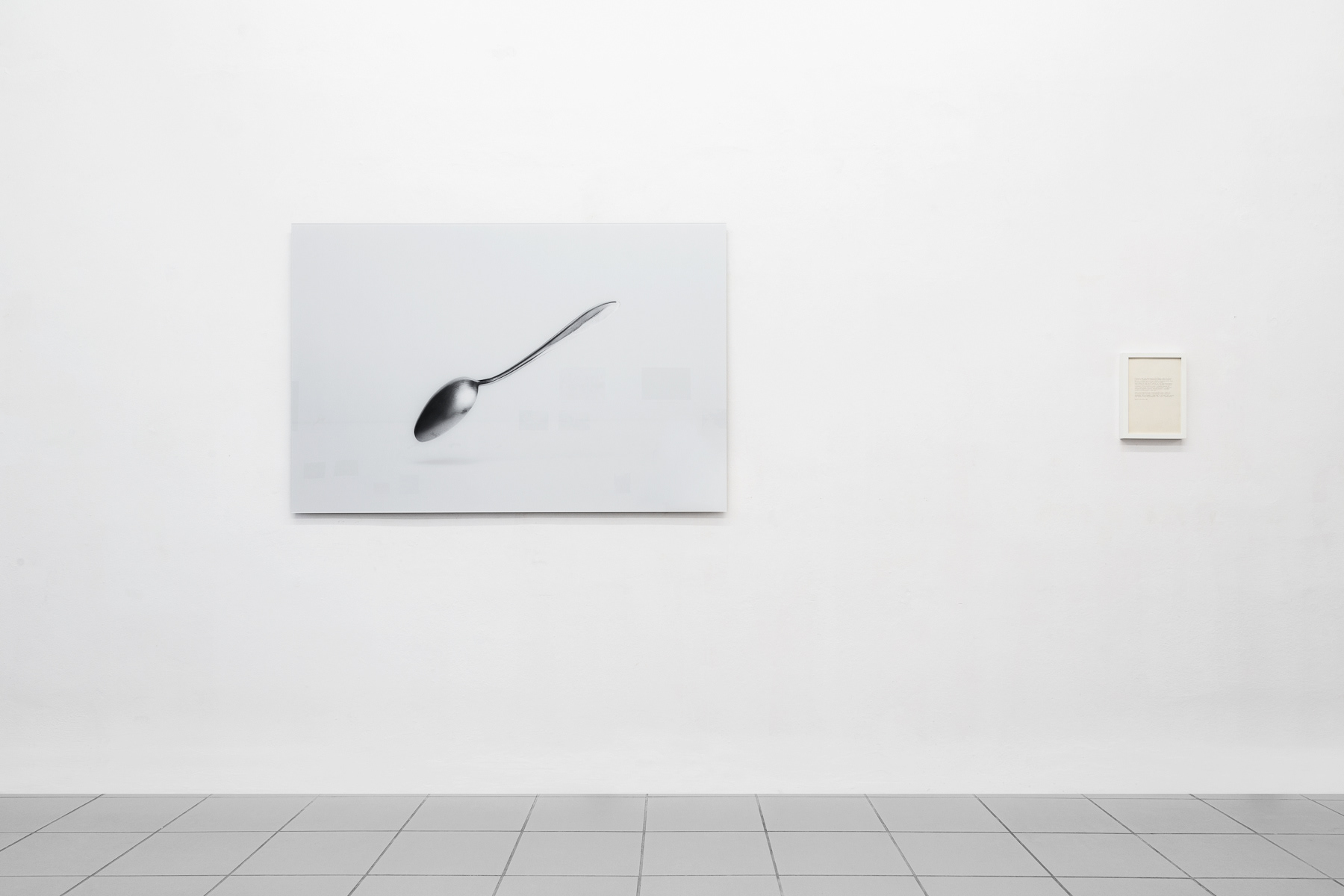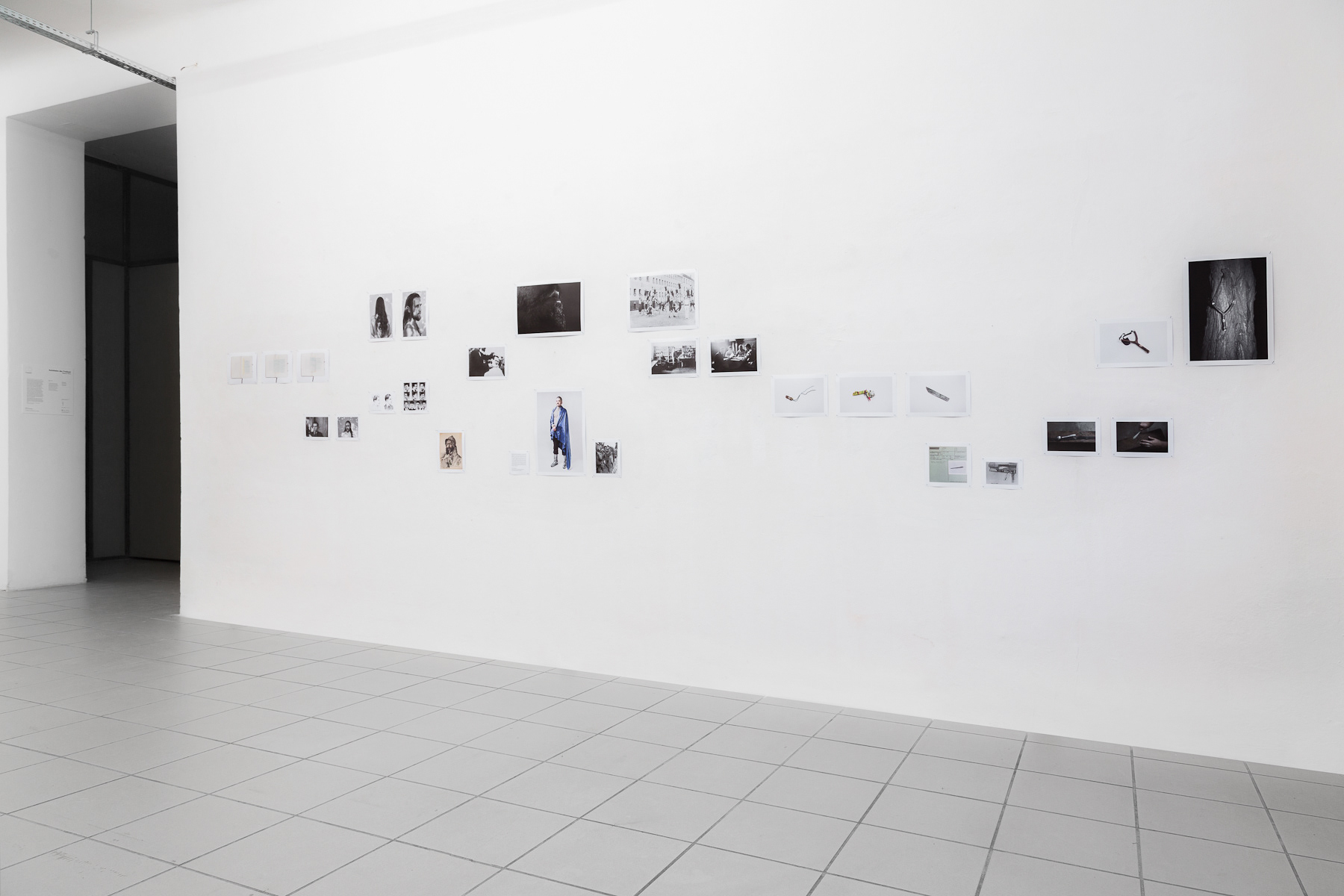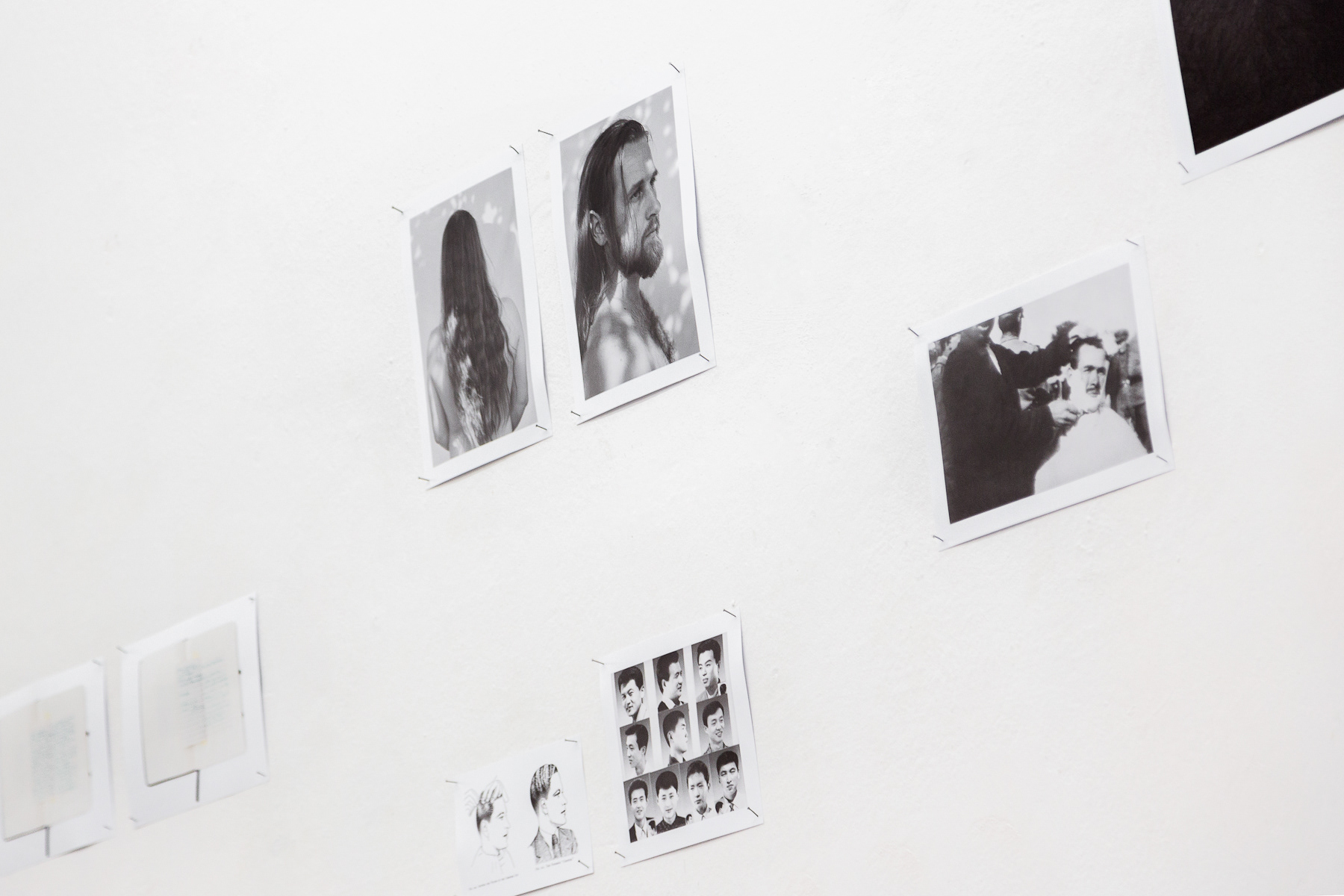




2015
EN
The project executed within the “Migawki” (Snapshots) programme of the Association of the Creative Initiatives “ę”.
Early in 1945, twenty-two years old Zygmunt is put in prison for holding an illegal radio station. The end of war is near, and the prison is filled with people from all over Europe. Brutally interrogated at night, they try to support one another during the day. They sing songs, tell stories. One of them is a barber. Hiding from the guards, he spends his days sharpening a spoon to make a razor. Then, he shaves the beards of himself and his inmates. Everybody is relieved.
This second-hand story is a pretext to considerations about maintaining dignity in the conditions of incarceration. The razor was made by a passionate man, who used it to create an illusion of normality and thereby possibly saved his own and other prisoners’ lives. In parallel, it becomes a magical artefact to the artist – a lucky charm to guarantee survival.
The exhibition takes the form of two-way narrative. On the one hand, it is created by the object itself – the spoon/razor for which its maker risked his own life, on the other – a network of factors connected with my idea of this story as well as obsession about it, which allow me to find analogies in seemingly distant topics.
PL
Projekt został zrealizowany w ramach programu „Migawki” Towarzystwa Inicjatyw Twórczych „ę”.
Projekt został zrealizowany w ramach programu „Migawki” Towarzystwa Inicjatyw Twórczych „ę”.
Na początku 1945 roku dwudziestodwuletni Zygmunt trafia do aresztu oskarżony o posiadanie nielegalnej radiostacji. Zbliża się koniec wojny, w areszcie znajdują się ludzie z całej Europy. Nocą brutalnie przesłuchiwani, w ciągu dnia starają się wzajemnie wspierać. Śpiewają piosenki, opowiadają historie. Jeden z nich jest fryzjerem. Ukrywając się przed strażnikami, spędza dni na ostrzeniu łyżki, by zrobić z niej brzytwę. Jego starania kończą się powodzeniem – goli brodę sobie oraz współwięźniom. Wszyscy odczuwają ulgę.
Ta historia, opowiedziana z drugiej ręki, jest pretekstem do rozważań na temat zachowania godności w warunkach uwięzienia. Brzytwa jest wytworem człowieka z pasją, który za jej pomocą, tworząc pozory normalności, być może ratuje życie sobie i innym uwięzionym. Równocześnie staje się dla autorki wystawy artefaktem magicznym – talizmanem, który ma gwarantować przetrwanie.
Wystawa ma formę dwustronnej narracji. Z jednej strony tworzy ją sam przedmiot – łyżka/brzytwa, której twórca ryzykował życie dla jej stworzenia. Z drugiej – sieć wątków związanych zarówno z moim wyobrażeniem o tej historii, jak i obsesją na jej punkcie, pozwalającą znajdować analogie nawet w pozornie bardzo odległych tematach.